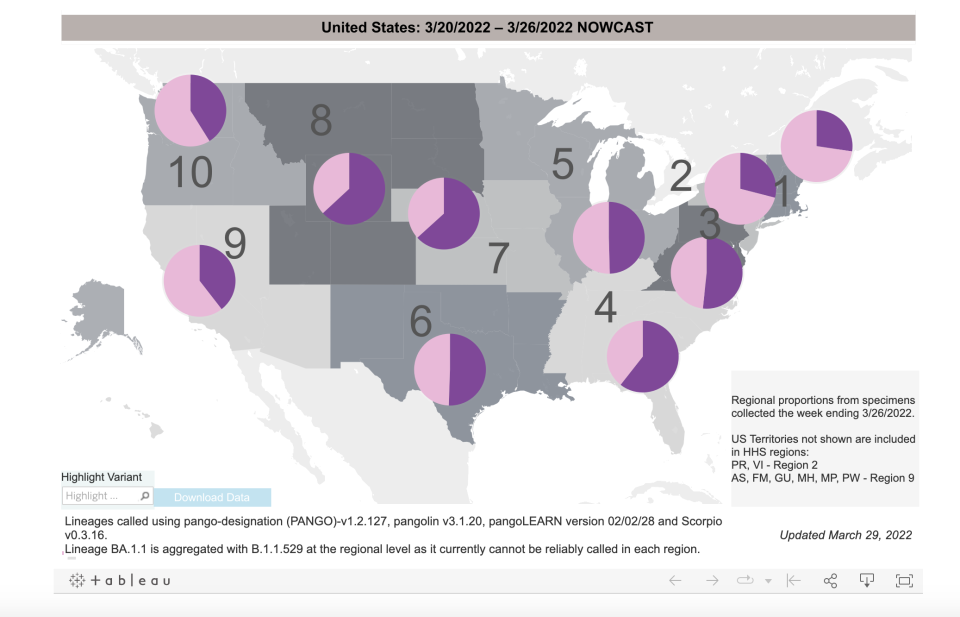Omicron BA.2 Variant Now Dominant In U.S.; New Cases Of More Transmissible Covid Hitting Northeast Hard

The more transmissible strain of Omicron, BA.2, is now the dominant Covid variant in the United States. In just the last week, it has risen from 35% of all new cases genetically sequenced to 55%, per CDC data. That’s a remarkable 80% jump in just seven days.
In the swath of the Northeast that includes Pennsylvania, New York, New Jersey, Vermont, New Hampshire, Connecticut, Massachusetts, Rhode Island and Maine and has a population of about 55 million people, BA.2 now accounts for more than 70% of all new cases. That’s up from just over 50% the week before and 38% the week before that.
More from Deadline
White House Principal Deputy Press Secretary Karine Jean-Pierre Tests Positive For Covid
Oscars Covid Protocol For Testing Event Attendees Is Updated To Address Recent Infections

CDC
A late January report from the Statens Serum Institut, which operates under the auspices of the Danish Ministry of Health, found that “BA.2 may be approx. 30% more transmissible than BA.1 (the original Omicron).” Some analyses since then have claimed the variant’s transmissibility advantage is even higher.
The good news is that the Omicron strains are much less virulent than Delta, but as the U.S. saw in early February of this year, Omicron’s increased transmissibility can still create a wave of deaths equal to or surpassing that of Delta by the sheer number of infections alone.
So far, that is not happening, with only minor jumps in the number of cases reported in parts of the Northeast and no significant jumps in hospitalizations.
One state where cases have risen alongside BA.2 is Florida. Covid numbers from data hub Helix.com indicate that, by mid-March, Omicron BA.2 accounted for 66% of all new cases in the state. The 7-day average of new cases in the state have risen from about 2300 on March 23 to about 4200 on March 28, per CDC data. But hospitalizations have actually dropped, so whether or not BA.2 will have a substantial impact on the local healthcare system remains to be seen, as hospitalizations generally lag cases by 2 weeks.
Best of Deadline
TV Cancellations Photo Gallery: Shows Ending In 2022 & Beyond
Awards Season Red Carpet Photos: Oscars, SAG Awards, Indie Spirits & More
What's New On HBO Max For March 2022: Day-By-Day Listings For TV Shows & Movies
Sign up for Deadline's Newsletter. For the latest news, follow us on Facebook, Twitter, and Instagram.

